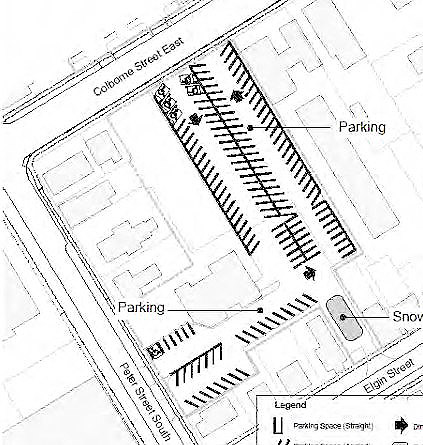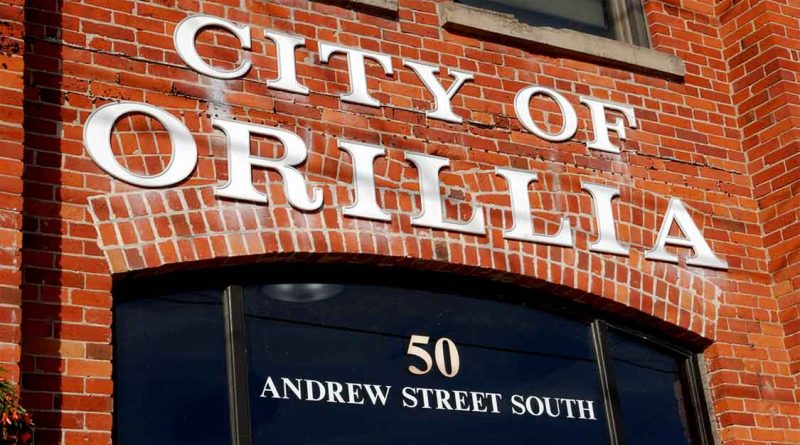Council Preview
By John Swartz
Orillia council has a closed session before the 4 p.m. start of the committee meeting. One of the in-camera items is about the sale of land in the Horne Business Park, and the other is an update about union negotiations with the clerical and technical bargaining unit.
The public meeting promises to be a long one with several major items on the agenda. The most important being a change in direction how the money received from the sale of Orillia Power Distribution is used.
Council went on record declaring the principal amount would go into a fund (the One Fund created by the Association of Municipalities of Ontario’s Local Authority Services and CHUMS Financing Corp., a subsidiary of the Municipal Finance Officers’ Association of Ontario) and be known as a legacy fund.
The goal of the investment is to replace the annual interest and dividends the City received for the distribution side of Orillia Power Corp. with interest earned from the legacy fund – and keep the principal amount safe and out of reach of spending by councils.
The direction of council at the time was to limit the kinds of investments the fund administrators could make to those which were of a guaranteed nature or had low risk to the principal amount (government bonds, GICs. etc.). The fund will remain, but since then interest rates on guaranteed and bank investments have dropped and staff wants to expand the definition of what kinds of investments are allowed to include market bonds and equities, which are riskier.
There should be a limit on how much of the principal can be used for market investments, but the report does not include that information. Three other municipalities which benefitted from sales of their local utilities to Hydro One have similar investments and do have limits on market participation.
Tree By-Law
A new version of the City’s tree by-law is on the agenda. In January council deferred passing a by-law which requires property owners get a permit to remove trees larger than 25 centimetres diameter at chest height without a permit and that a replacement tree be planted on that property, or another property be designated if there is no room. Removals need to be justified by an arborist. Council left open, pending today’s report from the environmental advisory committee, the question of imposing a $250 permit fee and whether to charge $350 per tree if one is to be planted other than on property where one is removed.
The 117 page report supports the permit fee and opposes regulations apply to properties less than 5 hectares. The proposed motion does not address the $350 replacement fee, but does introduce some new items. The committee is asking for money to have a tree conservation education program created as part of the 2022 budget; they would like to submit a budget request for 2023 to do a tree canopy study; and they would like to have a budget in 2024 to work with either Lakehead University or UofT to create an urban forest management plan. These resulted from support emerging from the consultations EAC held where people noted there is little or no data to support a more restrictive by-law. They received 436 responses from consultations.
The by-law exempts some trees considered to be invasive. Those are Buckthorn, Hawthorn, Manitoba and Norway Maples, Poplar and Willows. The reasoning is those varieties can take over an area and drive out other plants and trees, or have root systems that can damage foundations and water systems. The EAC committee believes not exempting those trees would present a barrier to removing problem trees before issues become expensive to solve.
Several responses were critical of the City for not managing its own inventory of trees – removing trees viewed as not necessary to remove, planting trees and then forgetting about them (i.e. died after planting and still standing years later), etc.
The new by-law carries a maximum fine of $10,000. This an increase from $5,000 the old by-law had. This may seem like a lot, but many communities in the U.S. carry fines in that neighbourhood or more on a per tree basis, rather than a per offence basis.
Couchiching Community Safety And Well-Being Plan
Staff have a very detailed report outlining work done on developing a regional (along with surrounding townships) safety and wellness plan. The province required all municipalities to create such plans in 2019, with a deadline of July 1 this year to do so.
Much of the work and resulting recommendations depended on the Community Wellbeing Index study and recommendations council adopted previously. The county directed the work on a regional basis. Of the many broad areas of investigation the local advisory committee focused next steps in four areas:
- mental health and addictions
- preventable mortality: social connectedness/safety
- employment
- access to services
The cost of Orillia’s participation is being forwarded to the 2022 budget and no details/numbers are in today’s report. The local Couchiching version will operate within the county structure which has been divided into 5 regions. There will be a central expert advisory committee and a central steering committee in addition to the local committees.
The report outlines each of the 4 areas of concern, from the evidence of current statistical information, what agencies are operating in those areas now, what is the level of co-ordination and how does that look to residents/users (easy or hard to figure out where to go or what to do), and what is missing and needs attention.
What is not apparent for this summary is how mental health plays a role in each of the 4 areas of concentration. Reading between the lines, it is also apparent the goal is to get those who need help connected with those who can help before police involvement becomes necessary, or is a first call (the OPP participated in planning committee work).
Other Items

Council previously dealt with a report to create monthly permit parking spaces at the former OPP detachment. Currently there is a lot fronting on Colborne Street which is contiguous with the new space and will be continue to be known as Lot 3.
Before moving ahead, council asked the Downtown Orillia Management Board for input and they support the idea. Spaces will be available for $50 monthly as in other lots. These new spaces are intended to be temporary until a new transit terminal is built in two years time.
Staff have a report asking council for permission to participate in the province’s Transportation Tomorrow Survey and $10,182 be budgeted. This study is done every 5 years and Orillia has been on board since 2001. The main benefits are access to statistical data which allows local systems to plan better, and outlining how connections to other regional systems might be made.
Councillors Mason Ainsworth and Pat Hehn each have enquiry motions. Ainsworth wants a report on the feasibility of allowing ice cream trucks to operate on City streets. Hehn wants a report on the feasibility of making the intersection of Matchedash and Elgin Streets a 4 way stop once occupancy at Matchedash Lofts reaches 75%.
![]()



The regular council meeting is a video conference and the chamber is closed to the public. The public can watch it live on Rogers TV.
(Photo by Swartz – SUNonline/Orillia; Image Supplied)




